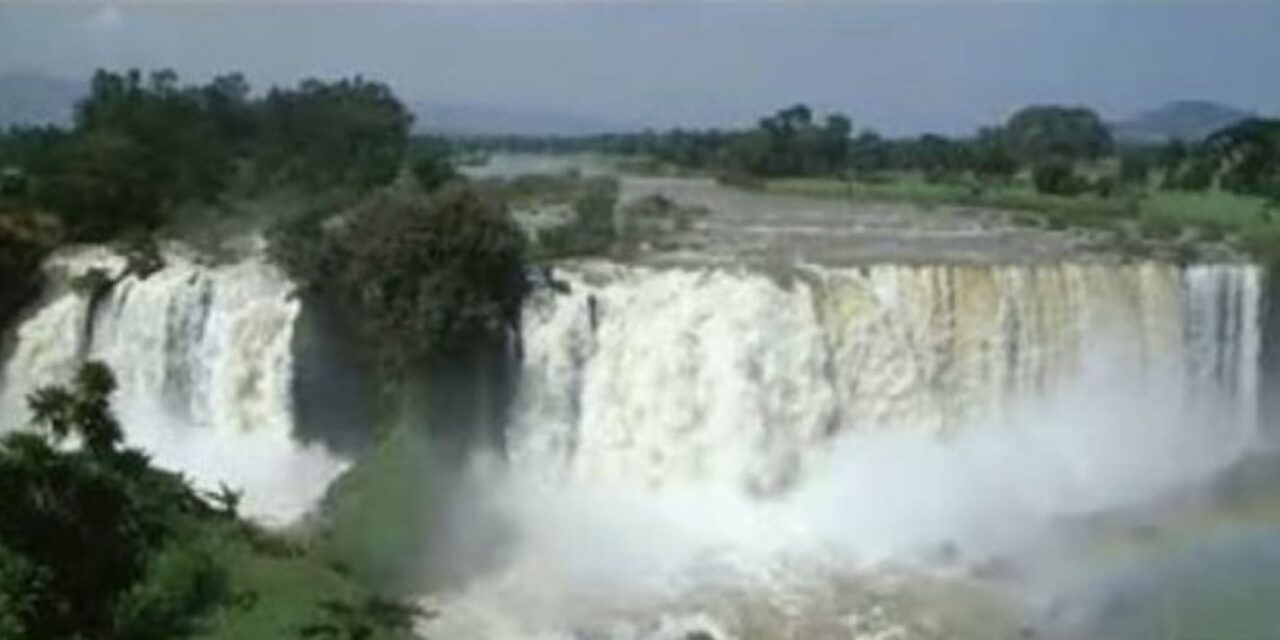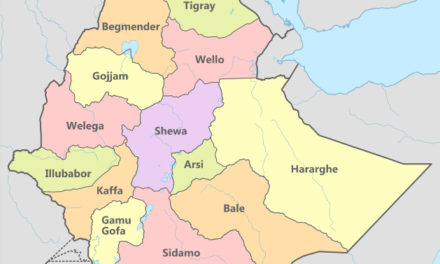By: Tekleab Shibru (PhD), Associate Professor of Geomatics at Chicago State University
Egypt has a legitimate concern when it comes to the construction Grand Ethiopian Renaissance Dam (GERD) dam on the Nile river. First, there is an estimated evaporation loss of 3 BCM of water every year. This is three times the amount of freshwater Egypt is now getting through desalination of marine water after expensive investments in desalination plants, which cost $ 3 – 4 USD for 3,785 litters of desalinization depending on the price of energy. Additionally, considering the current per capita water use of Egypt (i.e., 2,202 liters), this water is enough to support the daily per capita water use of close to 4 million people.
Moreover, there are legitimate concerns, with regards to filling the reservoir. Concerns as to whether the dam can be filled in 7 years, without having a significant impact on Egypt’s agriculture and water security, are contentious. Accordingly, Egypt could be losing up to 10 BCM of water every year, which is approximate 12 % of the 84 BCM of water Egypt is receiving at the moment. However, first, this shortfall is a temporary phenomenon, as the flow rate of the Nile river will be restored, once the GERD is filled. Secondly, the 1955 Nile water agreement, between Egypt and Sudan, allocated 55 BCM of water to Egypt plus 10 BCM allowance for the evaporation loss. The 84 BCM of water Egypt now getting is almost 20 BCM above what was allotted as per the agreement. Thirdly, Sudan has recently built a dam, having a reservoir that is holding 12 BCM of water. It was filled in a year, without inflicting noticeable pain to Egypt’s water security. The rate is 20% higher than the rate proposed for filling Ethiopia’s GERD. Fourthly, Egypt’s economy and people had survived, the annual shortfall of 25 BCM, during the filling of Lake Nassir, the reservoir of Aswan dam. And this 25 BCM annual filling rate is 150% higher than Ethiopia’s 10 BCM on average proposed to annually fill the GERD.
On the other hand, another worrisome thing about the dam is the speculation that GERD would fail anytime. Egyptian water scholars argue GERD has a possible structural failure due to geological, topographical, hydrological, and climatological factors that may induce a possible collapse. Geologically, the stability of GERD is alleged to have been compromised by it sitting on a shear zone and fractured basement rock, while topographically, GERD is alleged to have been located in a complex terrain that is exposed to hazards of landslides and flooding. Ethiopian highlands receive torrents of rainfall characterized by high intensity and quantity, which together with complex topography would yield momentous runoffs, with heavy sediment loads. Consequently, GERD is also hydrologically alleged as being vulnerable to this heavy and momentous hydraulic thrust that would risk the stability of the dam. Climatically, extreme weather conditions characterized by heavy rainfall in a short period are predicted on Ethiopian highlands. The runoff from these extreme weather conditions is alleged to compromise the structural stability of the dam due to associated land sliding, flooding, and overtopping.
There is also concerns that emanate from prejudice that Ethiopia cannot have the know-how to construct a hydroelectric dam of this magnitude. Therefore, Egyptian scholars question the wisdom devoted to the site selection and the engineering strength of the structural materials from which the dam is built. They also question the insight behind the size of the structural embarkment and the amount of water impounded thereof. Additionally, whether the safety evaluation is conducted or the understanding of the safety precaution and evaluation are there for the groundbreaking. Considering that Egypt is found downstream, to not just GERD but also the Aswan dam, it is important to evaluate the structural stability of the two big water dams, using literature-supported parameters for dams’ stringent structural stability. The parameters such as site investigation and testing; quality of the construction materials, and engineering credentials of the contractor, dam size and horizontal hydraulic thrusts, stability of the basement geology, technological advances, and safety evaluation are important considerations for comparing the structural stability of the two dams.
Accordingly, firstly, site investigation and testing for GERD were conducted in the 1950s; about the time when site selection for the Aswan dam was also conducted. However, while such investigation and testing were conducted by a reputed US bureau of reclamation for GERD, the Aswan dam’s site selection was based on local know-how. GERD’s site selection was further scrutinized and verified by a British firm in 2010 and U.S. Army Corps of Engineers (USACE) in 2017; showing the relative rigorous undertaking in the planning of Ethiopia’s GERD. Secondly, the engineering material from which the Aswan dam was constructed is earthen embarkment, while Ethiopia’s dam is Roller-compacted concrete (RCC); the engineering material which is approximately 10000 times stronger than an earthen embankment. The foundational basement rock for Aswan dam is sandstone while that of GERD is a metamorphic and igneous rock, relatively stronger and more stable. Ethiopia’s GERD is constructed by an engineering firm known as WeBuild-Salini with a global reputation, and deployed the 21st century technological, scientific, and engineering advances, whereas the Aswan dam is constructed by a local engineering firm with no reputation and is a product of 20th-century engineering advances.
Egypt is also concerned that GERD is exposed to seismic risks or hazards. Seismic Risk is the likelihood of the occurrences of the hazardous earthquake, which is determined as a function of historical records of seismic past events and impacts. It is expressed as a function of its magnitude and intensity. Magnitude measures the amount of energy released during the earthquake events, whereas intensity is the strength of the ground-shaking produced by an earthquake at a given location. Europeans Emergency event database (EM-DAT) of international disasters recorded an estimated 15,000 tremors for eastern Africa, including Ethiopia, from 1900 to 2013. This data can easily be used to evaluate the vulnerability of GERD to the Seismic risks and hazards thereby quell the worries of Egypt.
Generally, Egypt’s concern of GERD seismic vulnerability emanates from the alleged activation of seismic events from the weight of the water impounded by the dam on the Nile River. There are precedencies of such phenomena elsewhere around the world. For example, the weight of artificially impounded water by the Zipingpu Dam of China, the Koyna Dam in western India, Hoover Dam of the USA, and Katse Dam of Lesotho had activated seismic events that caused loss of lives, large-scale displacement of people, damage to infrastructures and properties. However, the weight of water, by these dams, triggered seismic events due to active Fault Zone or line of fractures in the basement rock to absorb water, history of the earthquake and hot springs are present in the vicinity. For example, the earthquake that hit the Zipingpu dam due to a geological fault or fracture that was present only 5.5kms away from the dam. Additionally, the Hoover Dam of the USA induced seismic events due to the presence of several major neotectonics fault systems in the nearby regions of northwest Arizona. Contrary to these precedencies, Ethiopia’s GERD is constructed on a stable continental interior far from tectonically active areas.
Additionally, Egypt’s concern with regards to GERD’s seismic vulnerability is the alleged dam’s location in or proximity of the great African Rift Valley. The Ethiopian section of the East African Great Rift valley system, a diverging plate boundary of the Nubian and Somalian plates, is known for its tectonic activities and seismic phenomenon. According to EM-DAT data, the spatial distribution of seismic risk in Ethiopia and surrounding areas is restricted to the Afar triangle, and southwest in Omo valley, of the Greater rift valley region, which is 600 and 700kms distant from the location of GERD. Besides, Ethiopia’s seismic risk is relatively mild and such that seismic activities can have impacts for only up to 100 km radius, a distance, which would fall short of reaching GERD by a distant margin.
Moreover, the intensity of the earthquake found in these Rift Valley areas of Ethiopia were intensity scales VI, VII, and VIII. These intensity scales denote impacts from swinging suspended objects and falling of shelved objects; to where ground shaking would impair driving a car, fractures concretes, and damages poorly constructed buildings. However, these potential areas are hundreds of KMS away from the location of GERD. And according to Roger Bilham, a senior research scientist and professor of Geology at the University of Colorado Boulder, impacts from such intensity rarely affects areas that are 200kms away from the epicenter of the earthquake. On contrary, studies show that Egypt’s Aswan Dam is found only 100kms away from a seismically active rock fracture area known as Kalabsha Fault Zone. It is also located in close proximity to the Red Sea rift (300kms), an active seismic zone formed due to diverging African and Arabian plates. Therefore, if at all vulnerability of mega-dam to seismic risks or hazards is a concern to Egypt, it should the vulnerability of its own Aswan dam than Ethiopia’s GERD that must be a matter of concern.
In conclusion, although it rarely occurs, extremely destructive failures of hydroelectric dams can happen. Given that Egypt is located downstream of its own Aswan and Ethiopia’s GERD dams, concerns regarding the structural stabilities of these dams are legitimate. Nonetheless, Egypt is more concerned about the likelihood of Ethiopia’s GERD structural failure. This is due to alleged geological, topographical, hydrological, and climatological factors that may trigger the structural instability and eventual collapse of the dam. It is also attributed to prejudice that knowledge capable to engineer the construction of a dam of GERD’s magnitude is non-existence in Ethiopia. However, relative to the Aswad dam, GERD construction began after appropriate site suitability studies, and relevant testing was conducted for its geology and geomorphology, by a reputable engineering firm. Also, the structural or engineering materials with optimal strength to withstand the horizontal hydraulic thrust was selected with the application of the advanced technologies of the 21st century. The whole project is contracted by WeBuild-Salini, a European company, with rich experience in building more than 200 Dams around the world. Aswan dam is constructed by a local engineering firm and no record is available to ascertain if such safety precautions have ever been applied to it. On the other hand, Egyptians are also concerned that GERD is vulnerable to seismic attack due to its location relative to seismic risk areas and/or the reservoir’s weight. However, data from EM-DAT indicates that seismically vulnerable areas in Ethiopia are restricted to the Afar triangle and Omo valley in the south, of the greater rift valley system. The GERD location is 600 – 700kms away from these areas, well beyond the reaches of their impacts. On contrary, studies show that it is Egypt’s Aswan dam located in a more proximate location to seismically active fault zones and the Red Sea rift, another reason why in fact Egypt must be more concerned about its own Dam than GERD.
References
Atalay Ayele (June 7, 2021) Dams in Stable Continental Interiors: The Case for the Great Ethiopian Renaissance Dam (GERD). Horn of Africa Insight, from https://www.hornafricainsight.org/post/gerd-on-seismically-stable-ground
Bausch D. and. Brumbaugh D. (July 30, 1997) Earthquake Hazard evaluation Mohave county Arizona Accessed from https://aeic.nau.edu/reports/mohave.html
Dandrawy, M. E., & Omran, E. S. E. (2020). Integrated Watershed Management of Grand Ethiopian Renaissance Dam via Watershed Modeling System and Remote Sensing. In Environmental Remote Sensing in Egypt (pp. 533-574). Springer, ChamEl-Said, M. (2020), Will Ethiopia’s disputed dam collapse? Eos, 101, https://doi.org/10.1029/2020EO147811. Published on 06 August 2020
Gala, T (2020) Exposing an Infinite Water Resource Advantage of Egypt over Ethiopia. DOI: 10.13140/RG.2.2.19256.16646
Gala, T. (2020) CONTROVERSY OF ETHIOPIA’S MEGA-HYDROELECTRIC DAM ON NILE RIVER: IS IT REALLY CONTROVERSIAL? DOI: 10.13140/RG.2.2.19804.13442
Hamimi, Z., Hagag, W., Osman, R., El-Bialy, M., El-Nadr, I. A., & Fadel, M. (2018). The active Kalabsha Fault Zone in Southern Egypt: detecting faulting activity using field-structural data and EMR-technique, and implications for seismic hazard assessment. Arabian Journal of Geosciences, 11(15), 1-20.
McCully, P., Books, Z., (1996) Dam–Induced Seismicity https://www.internationalrivers.org/dam%E2%80%93induced-seismicity
UNISDR. (2013). Gar Global Risk Assessment: data, sources and usage. UNISDR. http://www.preventionweb.net/english/hyogo/gar/2013/en/gar-pdf/Annex_1.pdf
Wikipedia (2020). “Webuild”. Retrieved August 10, 2020. https://en.wikipedia.org/wiki/Webuild





